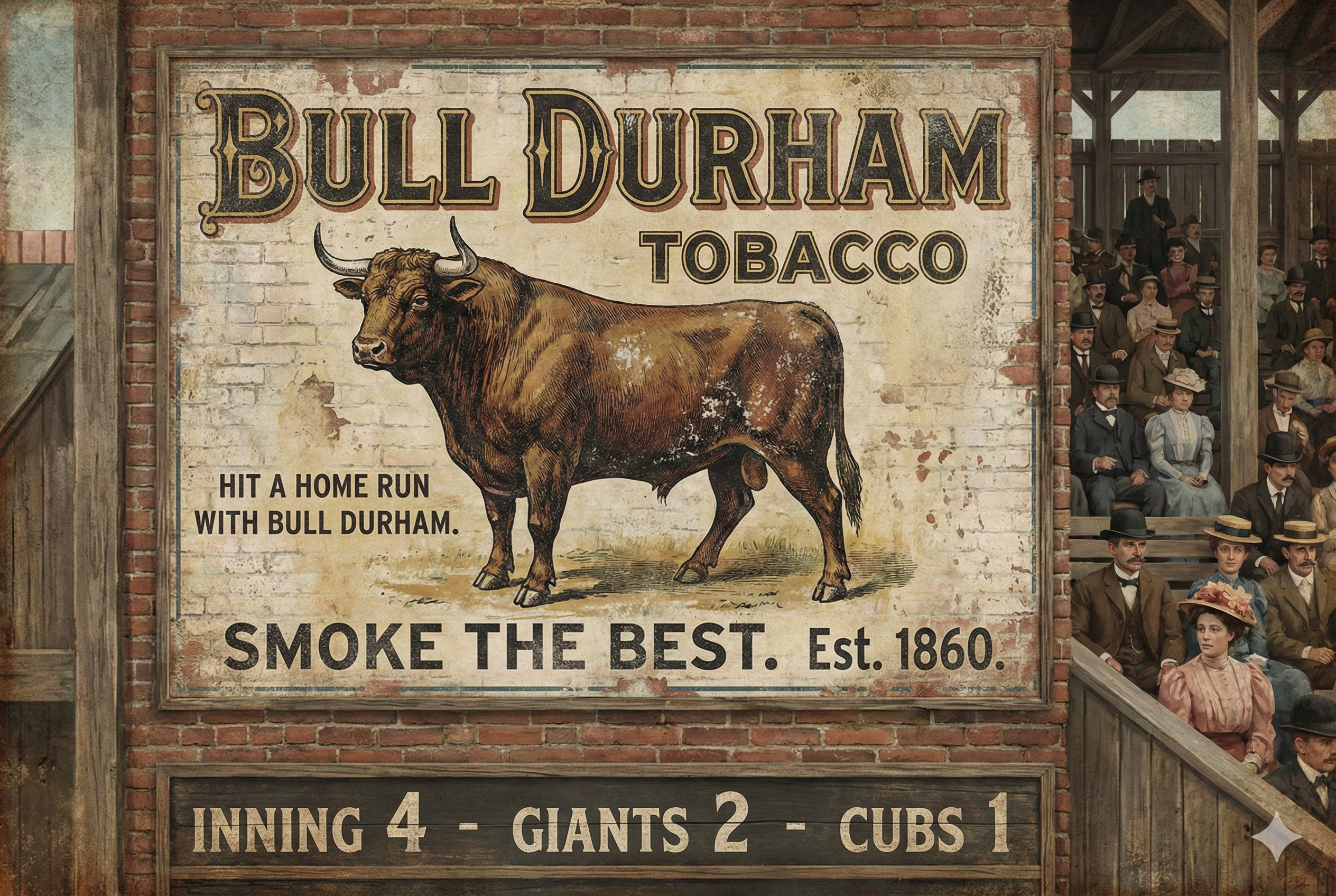This week PETA (People for the Ethical Treatment of Animals) asked Major League Baseball to stop using the term “bullpen,” suggesting the new description be “Arm Barn.”
Yes, really.
Rather than write 5,000 words on why PETA has way, way (way) too much time on their hands, I’ll focus this blog post on answering a common question I’m getting right now:
Why is it called a “bullpen”?
The earliest mention of the term “bullpen” in baseball
According to the Oxford English Dictionary the earliest use of “bullpen” in baseball was in a Cincinnati Enquirer article published on May 7, 1877, in which O.P. Caylor wrote:
“The bull-pen at the Cincinnati grounds with its `three for a quarter crowd’ has lost its usefulness. The bleacher boards just north of the old pavilion now holds the cheap crowd, which comes in at the end of the first inning on a discount.”
According to Wikipedia, the park in question (Avenue Grounds) is mysterious, and historians can’t even agree on where it was located in Cincinnati. Wikipedia says: “contemporary atlases indicate the “Base Ball Grounds” was about two short blocks west of Spring Grove Avenue, bounded on the south by Alabama Avenue, on the west by Mill Creek, on the north by the imaginary line extending from Monmouth Street, and on the immediate east by railroad tracks. It was a couple of blocks north of the stockyards, and was near the Cincinnati Workhouse, which served as the jail.”
Caylor’s quote in the May 1877 article seems to indicate that the “bull-pen” at the Cincinnati ballpark was being used as overflow seating for crowds buying cheap tickets. Originally, it appears, the Red Stockings had been using it to allow their pitchers to warm up.
But that 1877 article doesn’t explain HOW the area became known as the “bull-pen” in the first place. There’s much confusion about the term among language lovers and baseball experts.
Theories about the origins of the baseball term “bullpen”
Let us count the many origin stories for the word “bullpen” in baseball:
- It’s a reference to dairy farms, where bulls were penned separately from the cows, but in sight of their eventual “mates” so as to get them ready for “further action.” Get it? Like relief pitchers waiting to get into a game.
- The term “bullpen” could be a reference to rodeo bulls being held in a pen before being released into the main arena.
- Late-arriving fans in the 19th century were escorted to standing-room areas in foul territory. Because the fans were herded like cattle, this area became known as the “bullpen,” a designation which was later adopted for relief pitchers who warmed up there.
- In the early 1900s, ballpark fences were often plastered with advertisements for Bull Durham tobacco. Since relievers warmed up in a nearby area, the term “bullpen” came about.
- Hall of Fame manager Casey Stengel claimed “bullpen” came from managers getting tired of their relief pitchers “shooting the bull” in the dugout and were therefore sent elsewhere, where they would not be a bother to the rest of the team – the bullpen. Few historians take this theory seriously.
- At the Polo Grounds (home of the New York Giants and Yankees for many years), which opened around 1880, relief pitchers warmed up their arms in the same area as a stockyard or pen that held bulls. This story seems like a stretch.
What’s the real story of the word “bullpen”?
It’s likely that the original explanation comes from the common 19th century term where fans were cordoned off in cheap seating areas, which resembled a “bull-pen” where cows would be kept on a ranch or farm.
Here’s what John Thorn, the official historian of Major League Baseball has to say on the subject:
This is exceedingly stupid. A bullpen was the name for an enclosure to rope off fans on field; it was also the name of a frontier ballgame (see below). The term bullpen, signifying the foul areas in back of first and third bases, was in use as early as 1877. pic.twitter.com/ufUZZ78eA7
— John Thorn (@thorn_john) October 28, 2021
What do you think of the term “bullpen”? Is it insensitive? Is this controversy silly? Do you not care? Share your opinion in the comments below.







